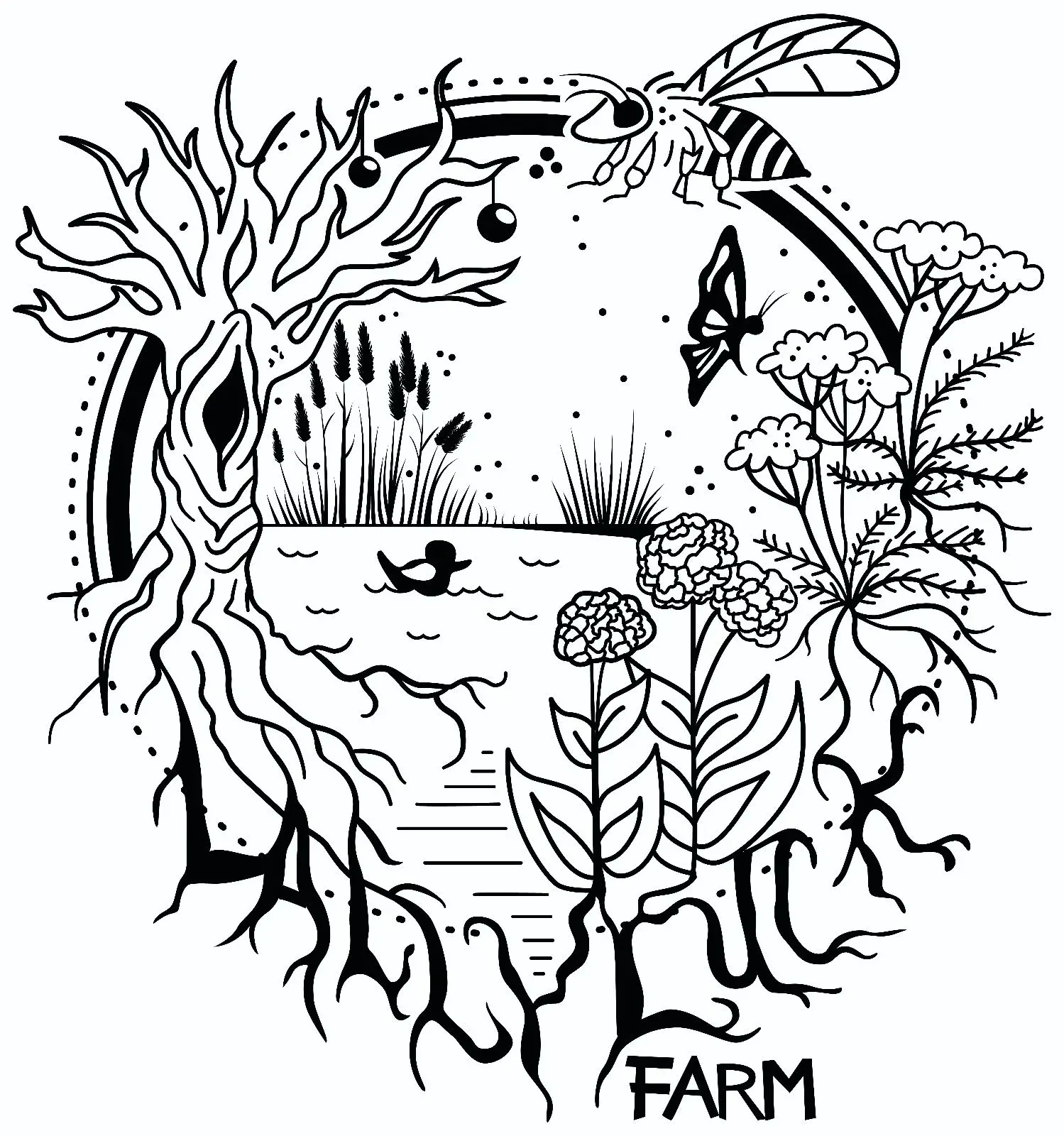
I harvested a dozen Hungarian Wax peppers this morning and that one (!) plant can now stand under its own weight again. We have a whole slew of tomatoes currently ripening on the vine so hopefully I can make some sauces and salsa this week. We got a food processor recently and I’m dying to try out more modes.

The bees are going crazy in one of our self seeding salad patches. We have four of these now, though two are newer and were planted later to stagger the harvest schedules and provide fresh greens for longer.

Here’s a view of the permanent raised bed near the northern boundary of our property. Native Echinacea (purple coneflower) is growing next to a native Rudbeckia (the yellow coneflowers), with black elder, bee balm, and others growing in the background. To the right is the only patch of grass I mow with any regularity, as it’s a shared boundary with our neighbor and their kids have been a little too helpful with the mower in the past.

Speaking of seeds, we have a whole bunch of seeds forming on New Jersey Tea (Ceanothus americanus and also my favorite plant) planted all over the place. These plants have a mechanism for seed dispersal that creates pressure behind the seeds as they ripen, which then releases and jettisons the seeds with force. It can be difficult to time seed collection with this kind of adaptation, but luckily a neighbor has some tulle she’s looking to offload so I’ll be making some small pouches to tie around the seed heads. I collected a ton of seeds from our Russian sages yesterday as well, but those are much easier to time - the flowers will brown and dry, at which point you can gently shake the seeds out into a container.
What’s growing on with you all?


What a nice post, thanks for sharing :)
Haven’t heard of the new jersey tea plant before (I’m European) but it sounds so cool! Do you use it for anything in particular? Like making tea?
Yes, exactly! It’s a small shrub, topping out around 1m, that produces the same compounds found in Camellia sinensis, the plant that most teas come from. We make a black tea by oxidizing the leaves before drying, and add in some of the leaves from our bee balm (Monarda spp) to make a very close approximation of “Earl grey”. During the period around the American revolution, it was used to avoid paying for the imported British tea and helped to make the case for independence. The roots have historically been used by herbalists for its hepatoprotective, lymphatic, antispasmodic, antiseptic, and expectorant qualities, though most commonly for liver conditions.
It’s also a nitrogen fixing plant, which helps to build soil health and fertility around it. The flowers attract and support dozens of species of pollinators, including a variety of parasitoid wasps, and the leaves are crucial for several species of butterflies and moths.
Wow, this sounds so cool!!! I made a faux black tea the other day using Chamaenerion angustifolium (I fermented it a bit as well). But it didn’t really come close to real tea for me. Maybe I’ll add something fragrant like you did to enhance the flavor a bit :)
Interesting! I don’t believe I’ve seen that listed in my books or notes for teas, but I have some growing here. Thanks for some reading material to go through!